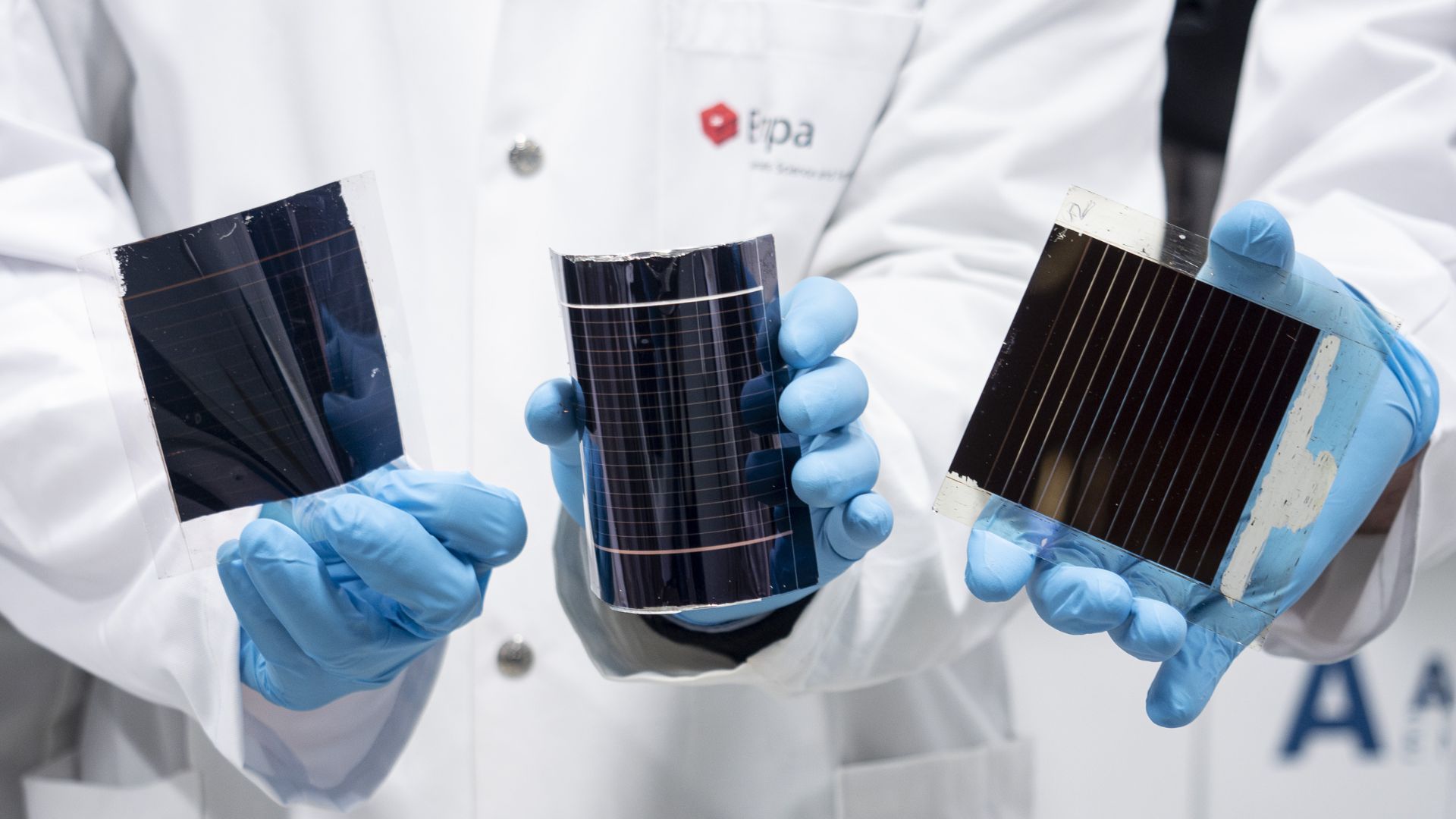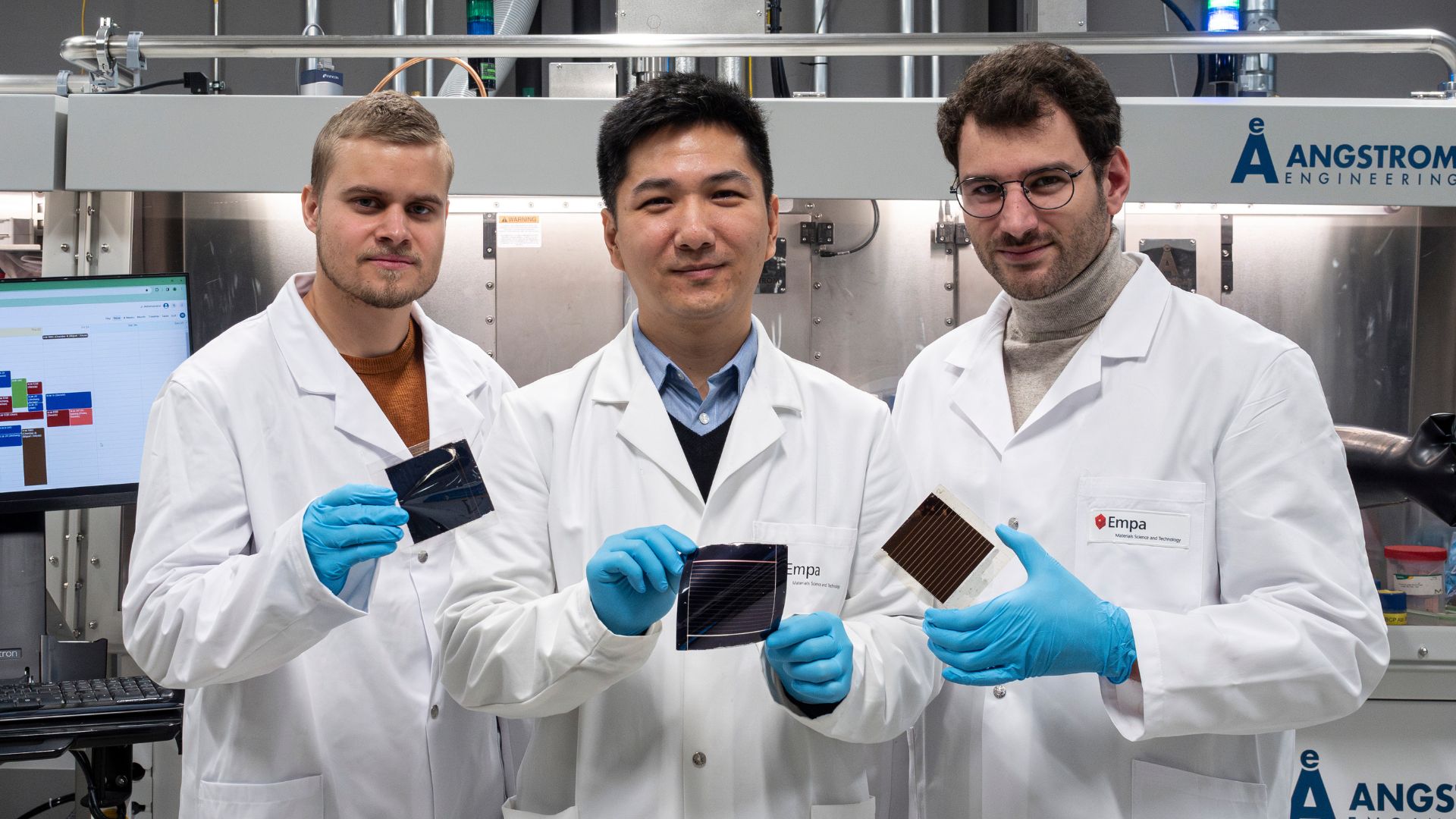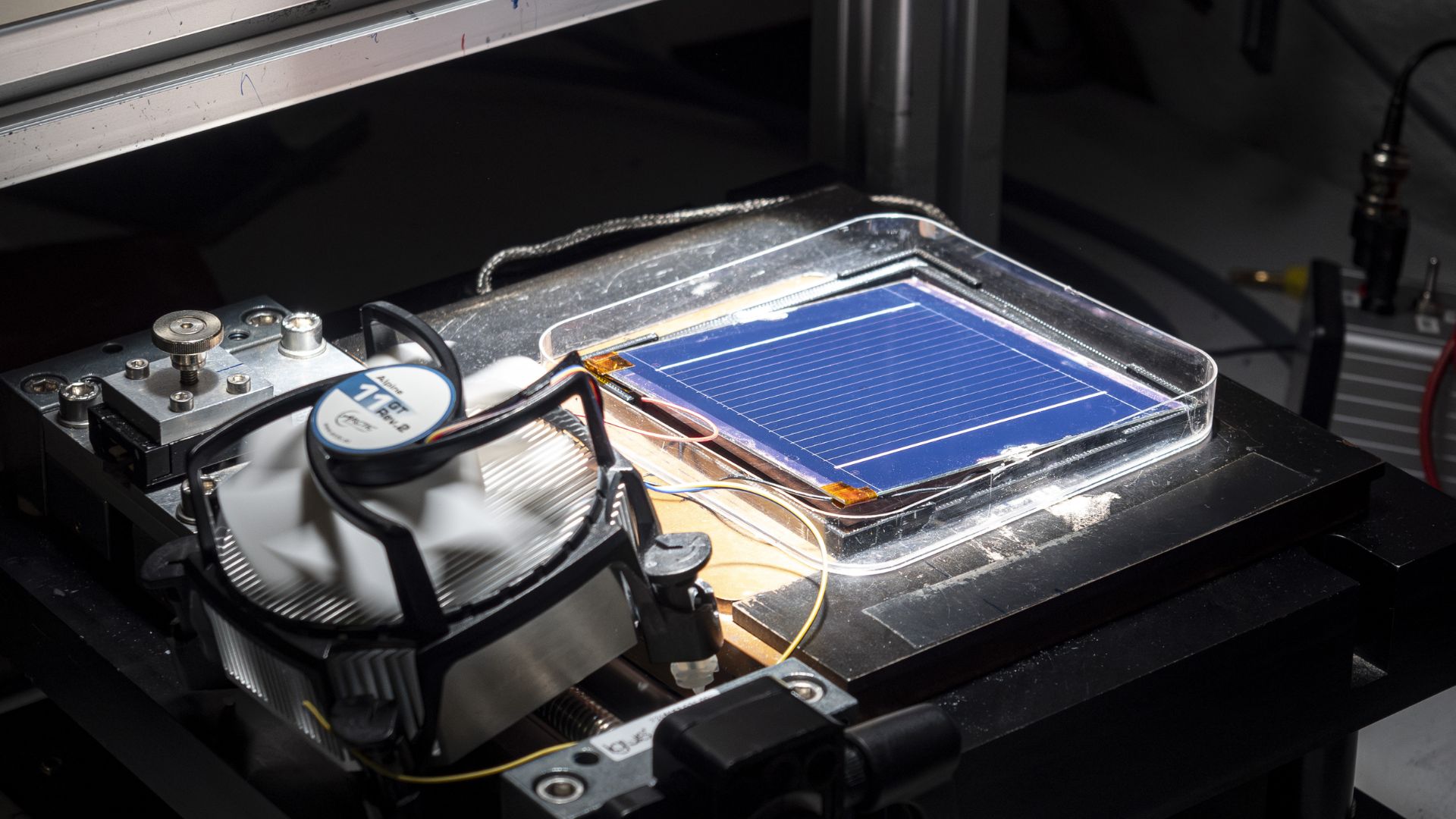For decades, the familiar blue rectangles of silicon solar panels have dominated rooftops across the globe with the increasing adoption of solar energy. While these panels have become a reliable renewable energy source, researchers are constantly exploring improving their efficiency and affordability. Enter perovskite solar cells, a revolutionary new technology with the potential to surpass its silicon predecessor.
Silicon’s efficiency ceiling
Silicon solar cells have undergone significant advancements, reaching near-peak efficiencies. However, a fundamental limitation exists – the material’s band gap. This property dictates the range of light energy a cell can convert into electricity. Photons (light particles) with energies exceeding the band gap pass through the cell unutilized. This translates to a theoretical efficiency limit of around 33% for single-junction silicon cells, with real-world values slightly lower due to unavoidable energy losses.


Researchers hold the two-layer perovskite solar cells can achieve higher efficiencies than silicon cells.
Perovskite as a tunable light harvester
Empa researcher Fan Fu highlights the potential of perovskite as a game-changer. Unlike silicon, perovskite boasts a tunable band gap. By adjusting the material’s composition, scientists can tailor its light absorption properties. This allows for creating tandem solar cells – stacking two perovskite layers with different band gaps.
Imagine two filters, one capturing high-energy sunlight, the other targeting lower-energy photons. By stacking these filters (perovskite layers) in a tandem cell, a wider range of the solar spectrum can be harnessed, theoretically pushing efficiencies to an impressive 45%. Perovskite can also be combined with silicon, creating hybrid tandem cells for enhanced performance.

Advantages extend beyond efficiency
Perovskite offers additional benefits beyond its tunable band gap. Fu emphasizes the environmentally friendly and cost-effective nature of perovskite production. Unlike silicon, which requires high-purity crystals and energy-intensive processes, perovskite thin films can be printed or deposited using low-temperature, solution-based techniques. This significantly reduces the carbon footprint of manufacturing.
Furthermore, perovskite’s tolerance for minor imperfections minimizes their impact on performance. This translates to simpler and cheaper production processes. The financial benefits extend beyond production. Increased efficiency means smaller solar panels can generate the same amount of electricity, lowering installation costs.
Perovskite’s lightweight and flexible nature opens doors for novel applications. Unlike bulky silicon panels, perovskite cells can be integrated into car roofs or buildings with limited weight capacity. This versatility broadens the potential for solar energy adoption.
From lab to reality
The journey from promising lab prototypes to widespread adoption requires addressing key challenges. Scaling up production from current centimeter-sized prototypes to industrial dimensions is crucial. Additionally, improving perovskite cells’ long-term stability and weather resistance is essential for real-world applications.
Fu expresses optimism about overcoming these hurdles within the next five to ten years. Research on perovskite solar cells is rapidly progressing, fueled by significant industry interest. Compared to the seven decades of silicon cell development, perovskite technology is still in its relative infancy, holding immense potential for future advancements.




